After ringing in the new year, farmers and home growers start preparing to plant their first year’s seeds. Whether it begins as germinating seeds indoors or eagerly waiting for the last frost date to pass, the enthusiasm for planting in early spring is unmatched. However, as summer crops, there are still many vegetables to plant in June to keep your garden in use for the next season.
The challenge you face in summer isn’t figuring out what to plant in June; it’s ensuring what you do plant survives more extended periods of sunlight and higher temperatures.
While we love many crops for their cold-hardiness, some cannot handle even a bit of cool weather. Starting a garden in June relies on plants resistant to heat and drought.

- What to Know before Selecting Vegetables to Grow in June
- Root Vegetables to Grow in June
- Planting Cucurbits in June
- Growing Herbs During Summer Months
- Plant Okra Seeds or Starts in June
- Summer Crops for Zones Eight to Ten
- Why You Should Plant Flowers in June
- Cole Crops to Plant in June
- Planting Melons in June
- Allium Vegetables to Plant in June
- Growing Fennel in June
- Green Veggies to Plant in June
- What Vegetables to Plant in June that Resist Heat
What to Know before Selecting Vegetables to Grow in June
Successful vegetable gardens prosper with timing and planning as well as attention to vegetable growing seasons. Plotting crop arrangements and rotations is just as crucial as sowing seeds at the right time to stagger harvests to take full advantage of the growing season.
As summer begins and you begin to brainstorm what seeds to plant, keep in mind the soil temperature required to grow successful yields.
Research your regions’ average soil temperatures and narrow your selection from there. Learn which vegetables to plant in summer so you get a nice harvest at the end of the season. Seeds planted in too cool or warm soil waste time and money as germination is impossible in poor soil conditions.
Root Vegetables to Grow in June
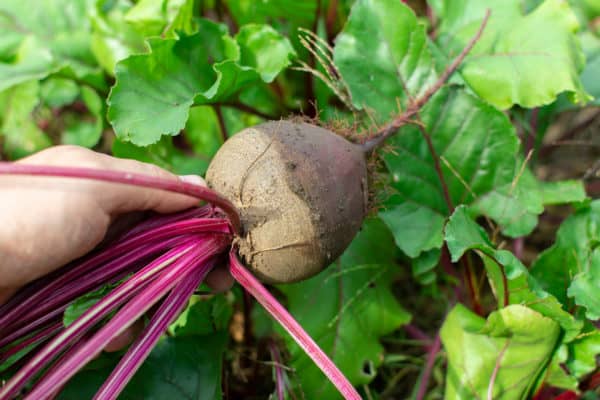
If you live in the USA in growing zones two and three, root vegetables are the perfect choice of seeds to plant in June. Plant carrots in zone 7 and sow potatoes in June so sprouts appear after the last frost date. It’s a good time to plant beets, too.
Some root vegetables also do well if planted in June in warmer zones such as six and seven due to the moist soil these regions have during the rainy season of June. New seeds and sprouts grow quickly with the warming temperature and increased sunshine.
In colder growing zones, other vegetables to grow in June include kale, scallions, and chard, all hardy plants that survive being sown directly into the garden.
Due to the long growth period squash plants require, if planting in zones two and three, we suggest using starts to get a jump start on growing them to ensure they reach maturity in time.
Vegetables like radishes, turnips, and rutabaga are excellent garden additions to sow in June for growers living in warmer areas around growing zones four and five. Parsnips can withstand a bit of frost in fall to make them sweeter right before harvest.

Planting Cucurbits in June
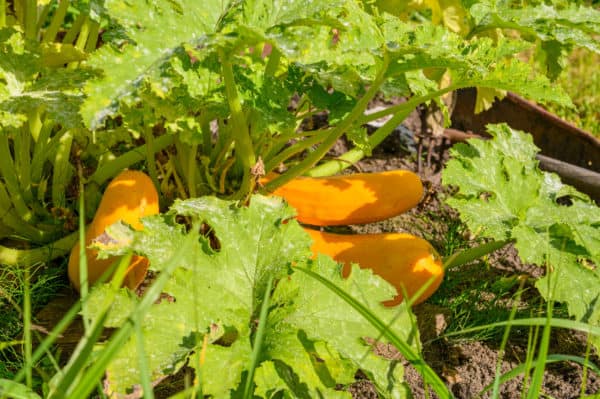
When looking for what can be planted in June, gourds and squash plants like cucumbers and summer squash are great choices to add to your summer garden. It’s also when to best plant zucchini in most areas.
If the summer weather in your growing zone runs short and the cold fall weather starts early, install a row cover over your crops to protect them from frost until they are ready to harvest.
For growing zones that cover the Pacific Northwest, mid-Atlantic, and parts of the Midwest, the weather and rainfall here are nearly perfect for planting seeds.
Due to new seeds requiring regular watering during the growing season for cucumber and other curcurbits, your workload may be minimal with the right amount of rain. Pumpkins, summer squash, and zucchini are perfect seeds to sow at this time.
Growing Herbs During Summer Months
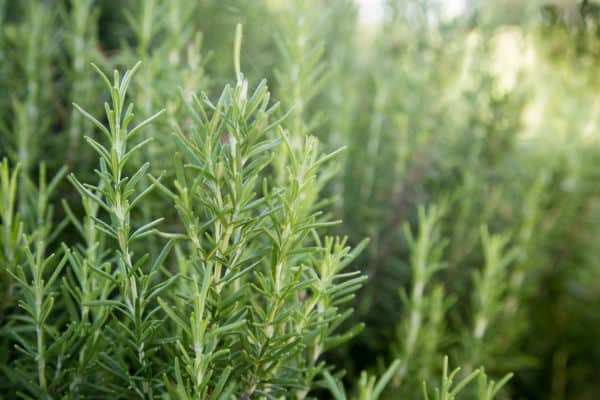
Herbs shouldn’t be skipped when looking for what vegetables to plant in June. As a subset of vegetables, herbs do well when grown in June, as some cannot handle much heat depending on your growing zone.
For most zones, we recommend you plant cilantro or parsley in June or in late spring once all frost is gone or in early fall, as cilantro grown in summer tends to come with a bitter taste. June is the perfect time for growers living in the north to plant cilantro and oregano when temperatures are between 60-70°F.
Plant Okra Seeds or Starts in June
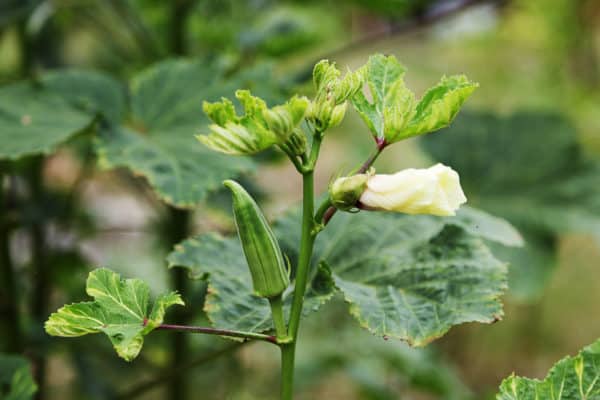
As more people realize how good okra is, its popularity rises. For farmers and home growers, okra is an excellent plant to sow at the end of spring as it enjoys heat and handles drought well.
If you start with a seedling, it saves about three weeks on its growing time, which is helpful if the temperature for your area is rapidly changing.
Okra proliferates when gently added to raised beds that allow good drainage just as the warm season starts in June. To ensure your okra thrives, monitor evening temperatures to ensure they are suitable for growing okra. June is the best time to plant okra, as okra prefers evening temperatures of least 60°F.
Keep the soil around okra fertilized and rich with organic matter to promote growth and space plants ten inches apart when planting.
Although okra enjoys heat, keep the soil moist with at least one inch of water each week. Testing the soil by sticking a finger into the top inch is a great way to quickly check if the ground needs water, regardless of what the soil’s surface looks like.
Summer Crops for Zones Eight to Ten
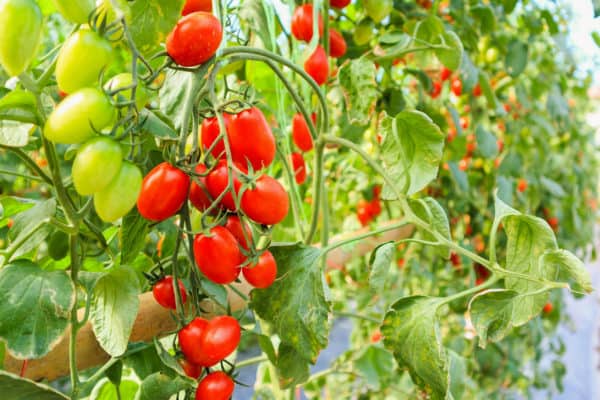
In the southern United States and California, the growing season looks very different from growers in the northeast. Because of the nearly year-round summer that these locations enjoy, planting and harvesting a wide variety of crops is routine.
In June, plants like okra and tomatoes enjoy the warmth of the summer heat but may be at risk for drying out without proper irrigation in places prone to droughts. This growing season for corn may require extra water. Pay careful attention to your soil’s moisture by adding mulch or row covers to your plants to protect them.
Why You Should Plant Flowers in June
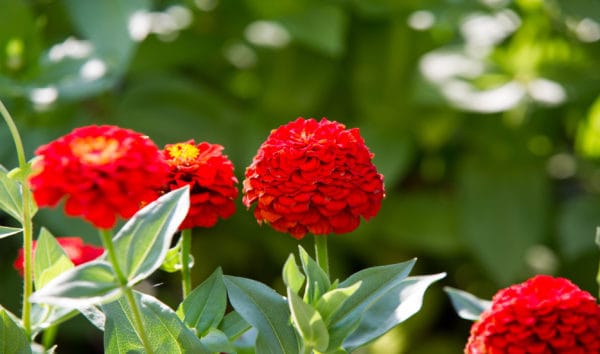
While not technically vegetables, plants like nasturtium are great options to sow in the summer to aid in the growth of your crops. By adding flowers, you add color to your garden and the benefit of companion planting seeds that help by adding nutrients to the soil and keeping pests away to minimize the need for pesticides.
Nasturtiums are easy flowers to grow that come in two main types: vining or bush. The kind you grow depends on the space allotted in your garden for this edible flower.
Outside of their beauty and taste, nasturtiums are excellent choices for any grower to include in their garden as the flower works well as a companion plant for many crops such as cabbages, kale, and broccoli.
Nasturtium flowers act as a trap crop, drawing pests like aphids in to keep them away from your value summer crop. Aside from keeping pests away from the rest of your garden, nasturtium also attracts beneficial insects like pollinators to help pollinate other flowers in the garden to aid fruit production.
Also known as pot marigold, Calendula is a medicinal flower with many unique uses. Sow seeds directly into your garden starting in spring through June. Plant a staggering collection of these golden flowers and enjoy the sight as they blossom in six to eight weeks.
Calendula flowers serve many purposes, as they are edible, but they are more known for their medicinal use. Although its medical use throughout history varies, calendula oil is still used in salves as an anti-inflammatory and to heal wounds.
Cole Crops to Plant in June
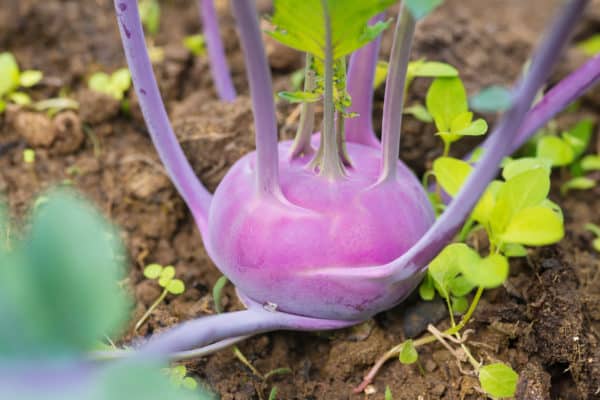
For gardeners living in zones two through six, cole crops make great June additions to your garden. Cole crops like cabbages, cauliflower, and kale do not enjoy hot weather, so for those living in northern regions where June still holds a chill from winter, it’s an ideal time to sow more seeds. Planting kale from seed is easy and rewarding.
Kohlrabi, grown from its stem, has a short growing season before its harvest. Sow your first seeds in early spring, and then again every two weeks from the end of June through July for a continuous harvest.
Chinese cabbage and bok choy are two popular types of cabbage that grow well in summer for a fall harvest if planted in mid-to-late June.
Brussels sprouts grow best in cool weather, but germination when planting Brussels sprouts is possible in temperatures ranging from 45-80°F. For a fall harvest, sowing seeds indoors and transplanting them into the garden in late June allows you to have them ready for harvest when fall arrives.
Depending on your growing zone, these are also some of the best vegetables to plant in August or September for a late fall crop.
Planting Melons in June
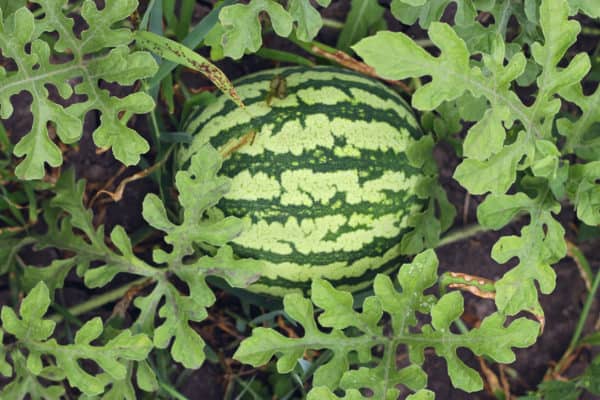
Rather than starting melons from seeds in June, we suggest purchasing a start to sow into the garden. Plants like watermelons die off when hit with frost, so in colder climates, it is best to wait until all danger of frost passes or grow melons in a greenhouse to avoid all risks altogether.
Melons like watermelon and cantaloupe do well when planted in June in areas with a warmer climate, like zones eight through ten. In these places, melons receive the sunlight they require to grow healthy but require extra attention to ensure they do not dry out.
Allium Vegetables to Plant in June
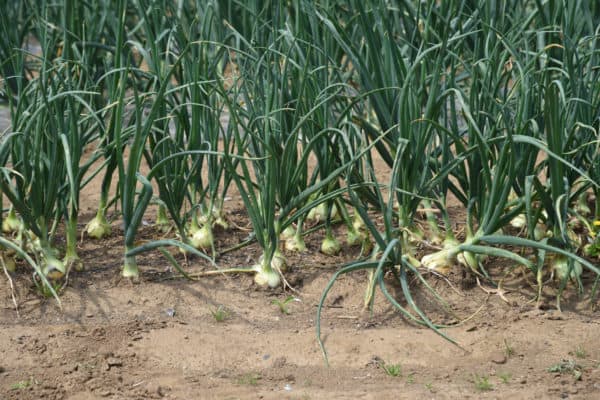
Crops in the onion family typically like growing in cooler conditions and are best planted in spring and fall when the dangers of frost are not a concern. Because onion crops grow and develop more slowly, they prefer drier conditions.
Home growers living in northern growing zones where summers remain cool as temperatures rise in the south can get away with planting onion sets and seeds for leeks and chives in June. Depending on the temperature, you may not harvest large onions as you would during another time of the year.
Growing Fennel in June
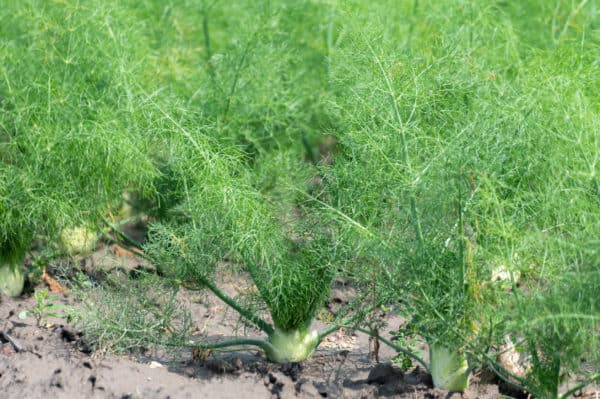
Fennel is a divisive crop among growers, but it generally enjoys growing in spring; however, certain varieties do better when planted in summer and early fall if the weather is cool.
For growers who are worried about the climate being appropriate for growing fennel, plant Zefa Fino seeds. This variety of fennel is a bolt-resistant hybrid, meaning that if you experience a spike in temperatures, this fennel will not suddenly start producing seeds like other crops that might be unable to handle the heat.
Start fennel seeds outdoors or indoors to prepare for transplanting if the last frost for your area occurs in June. The best time to harvest fennel is in fall, so begin sowing Florence fennel in mid-June to develop in the cooler days at the beginning of summer.
Green Veggies to Plant in June
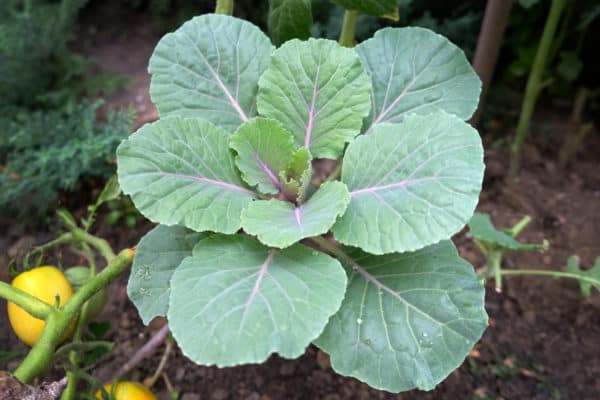
Temperatures are likely quickly rising from the midwest to southern New England as the last bit of winter chill vanishes by June. Still, this is the perfect time to plant hardy greens like Swiss chard, collards, and kale.
Although the flavor of mustard greens is best when grown in winter, it is possible to grow them year-round in a cold climate, so planting in summer in colder growing zones is ideal for June.
Endive is another crop that prefers cool weather as germination is impossible when the temperature reaches above 80°F. In cooler regions, plant your second endive of the year once the threat of frost passes, or wait until late summer if you live in a warmer climate.
What Vegetables to Plant in June that Resist Heat
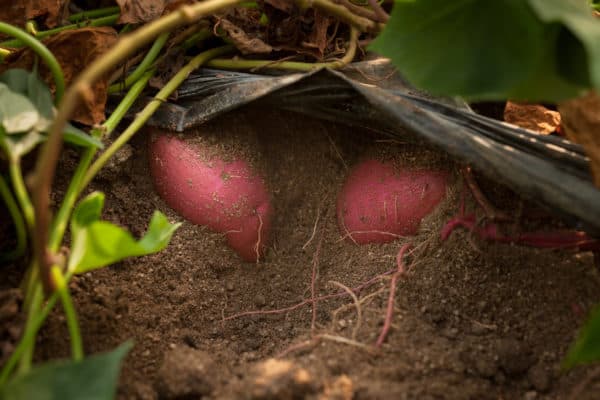
If you’re lucky enough to live in the southwest United States or, even better, in Hawaii, your options for what to plant in June are wide open due to the climate. In growing zones starting with eleven, pole beans and tubers like sweet potatoes do well with the warm weather.
For any beans, ensure to provide necessary support like a trellis or canes with wire to allow your plants to grab on and grow vertically after sprouting. For bush varieties, provide them with proper space in your garden.
Depending on your location in the country, June is an excellent month to either start planting new crops or start working your way toward the second harvest of your favorite root vegetables.
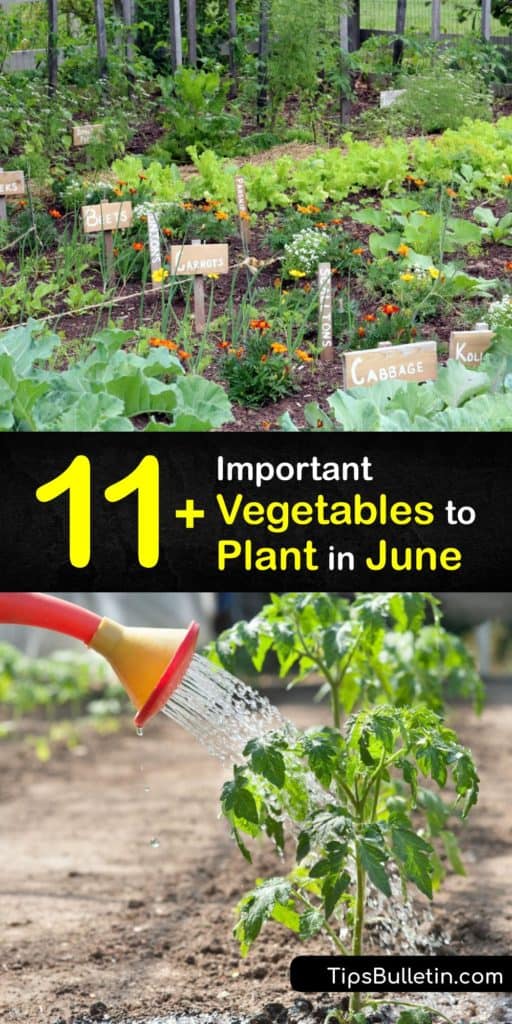
Feel free to reference our guide when searching for vegetables to plant in June and share it on Facebook and Pinterest with those who might be asking similar questions like, “What vegetables to plant in June?”